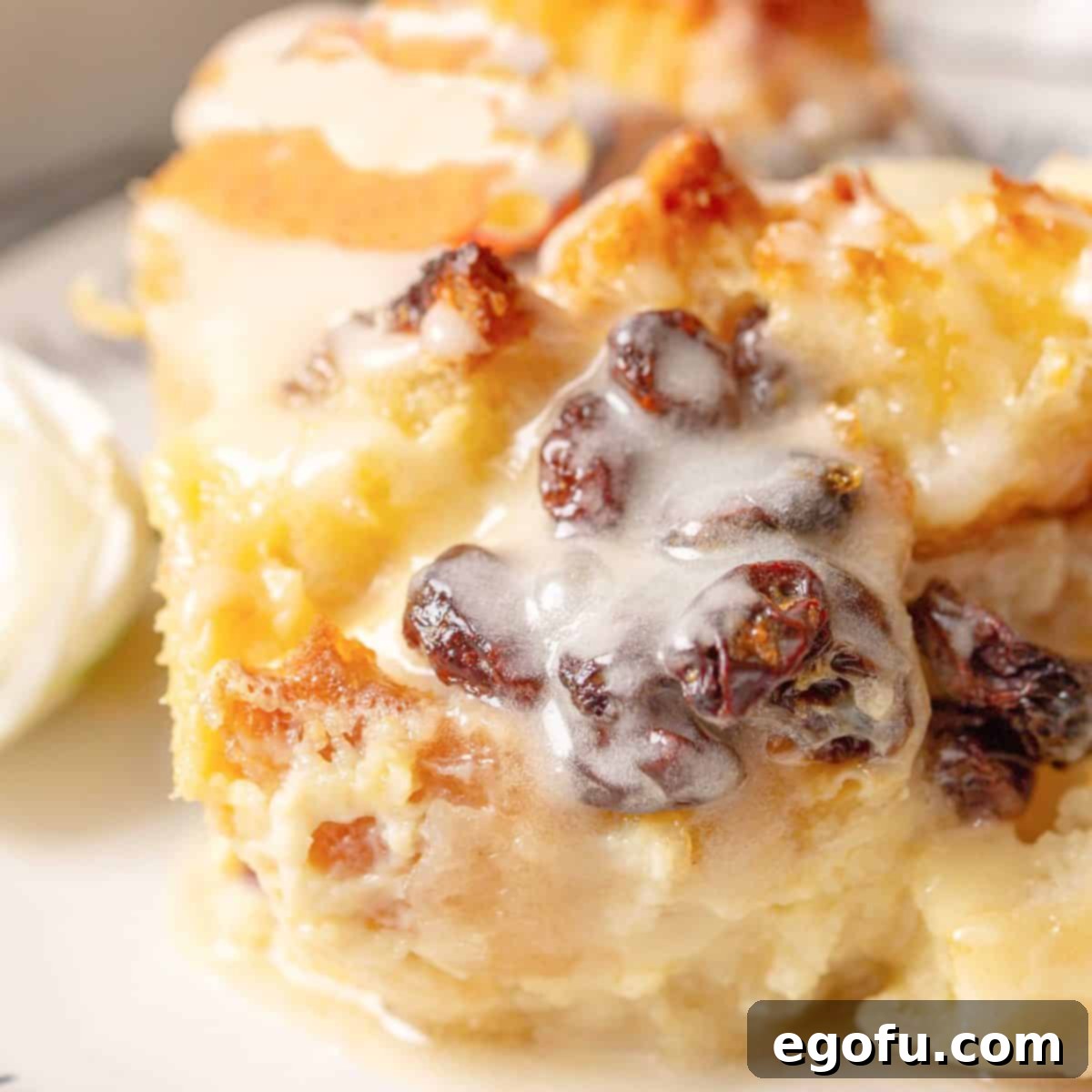Welcome to the ultimate guide for creating the most delectable, classic bread pudding you’ll ever taste. This isn’t just a recipe; it’s an invitation to transform simple, humble ingredients into a warm, comforting, and utterly irresistible dessert, breakfast, or brunch staple. Imagine tender chunks of French bread, generously coated in a rich, spiced custard, baked to golden perfection, and drizzled with a decadent glaze. This isn’t just good; it’s the *best* bread pudding recipe, designed to be effortlessly made and endlessly enjoyed.
THE TIMELESS APPEAL OF BREAD PUDDING: A CLASSIC AND EASY DESSERT
In a world of fleeting culinary trends, some dishes stand the test of time, and bread pudding is undoubtedly one of them. For centuries, this ingenious creation has been cherished as a resourceful and delicious way to breathe new life into stale bread. Far from being a mere “leftover” dish, bread pudding has evolved into a beloved dessert known for its comforting texture and customizable flavors. Whether you’re seeking a cozy treat on a chilly evening, a delightful addition to your breakfast spread, or an elegant brunch centerpiece, this classic recipe offers unparalleled versatility and satisfaction.
The beauty of bread pudding lies in its simplicity. It requires minimal effort to assemble, making it a perfect choice for both novice bakers and seasoned home cooks. Many of us, despite our best intentions, occasionally find ourselves with a loaf of bread that’s seen better days. This recipe is your secret weapon, turning what might otherwise go to waste into a luxurious culinary experience. If you’ve never experienced the magic of homemade bread pudding, prepare to be enchanted. It’s a dish that evokes nostalgia, warmth, and pure indulgence with every spoonful.
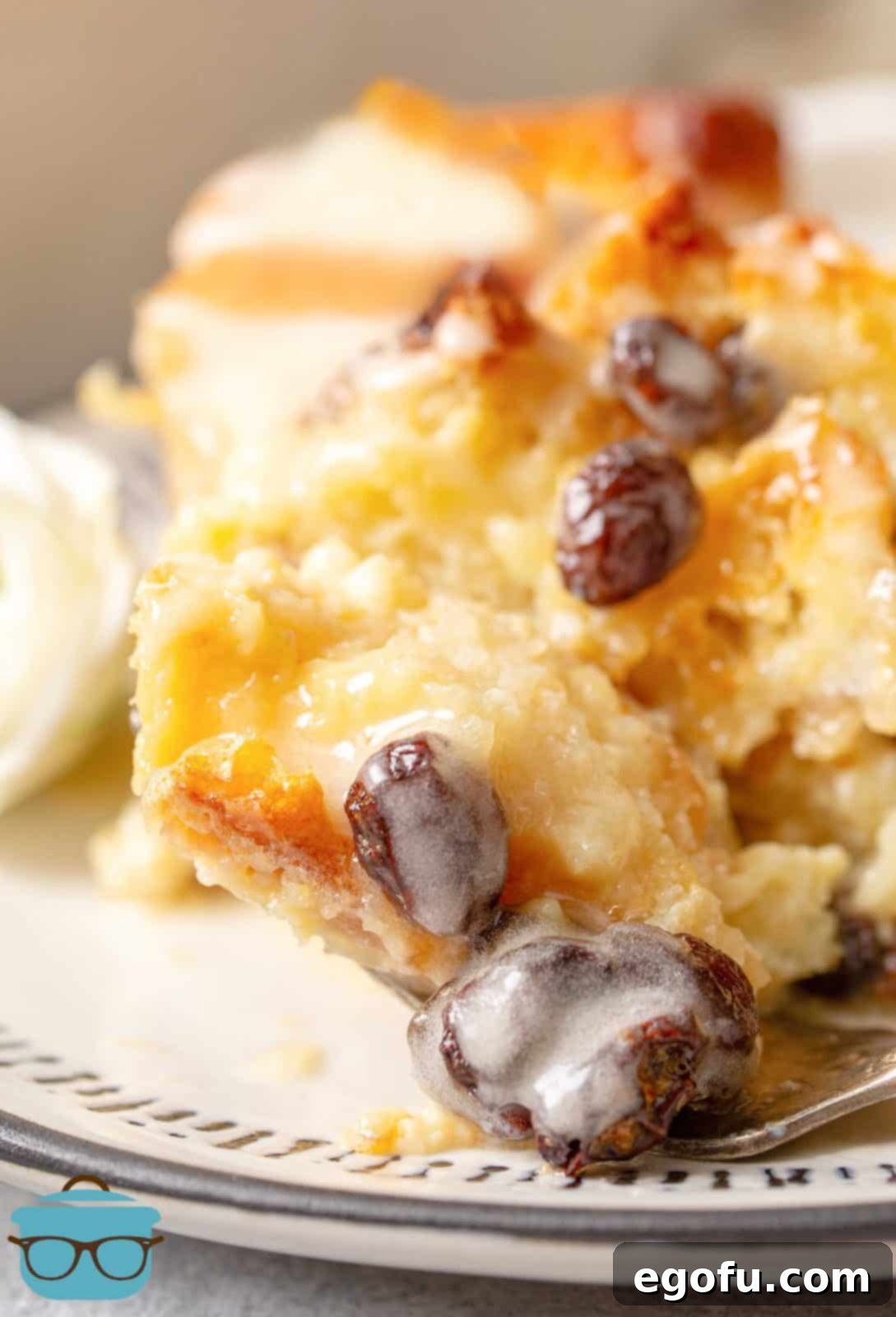
MASTERING THE BREAD PUDDING BASICS: FREQUENTLY ASKED QUESTIONS
Absolutely! While rum or whiskey adds a traditional depth of flavor, it’s completely optional. If you still desire that warm, spiced note without the alcohol, you can easily substitute it with 1 tablespoon of vanilla extract combined with 1 tablespoon of rum extract. For those who prefer to omit the specific flavor entirely, simply increase the vanilla extract to 3 tablespoons, or replace the half-cup of rum with an additional half-cup of milk in the custard mixture. The pudding will still be wonderfully flavorful and rich.
Yes, the type of bread is crucial for achieving the perfect bread pudding texture, but you have several excellent options beyond French bread. The key is to select a sturdy, firm bread that can withstand soaking in the rich custard without turning to mush. Ideally, your bread should be slightly stale, as this allows it to absorb the liquid more effectively. Excellent choices include Italian bread, challah, sourdough, or even Texas toast. These varieties offer a robust structure and delightful chewiness. We advise against using softer breads like brioche or standard sandwich bread, as they tend to become overly soggy and lose their texture when saturated with the custard.
While raisins are a traditional component of classic bread pudding, your culinary journey should always be tailored to your preferences! If raisins aren’t to your liking, feel free to simply omit them without any replacement. However, if you’re looking for a delightful substitute, dried cranberries (often sold as Craisins) offer a lovely tart counterpoint to the sweetness. Other fantastic options include chopped dried apricots, cherries, or even chocolate chips for a decadent twist. Experiment with your favorite add-ins to personalize your pudding.
For a truly rich and creamy bread pudding, the fat content of your milk matters. We highly recommend using milk with at least 2% fat, or even better, whole milk. The higher fat content contributes significantly to the custard’s velvety texture and decadent flavor. Using thinner milks, such as skim milk, will likely result in a less satisfying, thinner custard that may not set as beautifully. For an exceptionally luxurious pudding, consider using half-and-half or even a blend of milk and heavy cream to elevate the richness.
Proper storage ensures your delicious bread pudding remains fresh and enjoyable for days. Once cooled, cover the dish tightly with plastic wrap or transfer the bread pudding to an airtight container. It will keep beautifully in the refrigerator for up to 5 days, making it perfect for meal prepping or enjoying throughout the week. Bread pudding also freezes exceptionally well! For best results, we recommend freezing it without the glaze. Wrap individual portions or the entire dish tightly in plastic wrap, followed by a layer of aluminum foil. This double-layer protection helps prevent freezer burn. Frozen bread pudding will maintain its quality for up to 3 months. To reheat, simply defrost it overnight in the refrigerator, then warm it in a covered oven until heated through. Prepare your fresh glaze just before serving for the best experience.
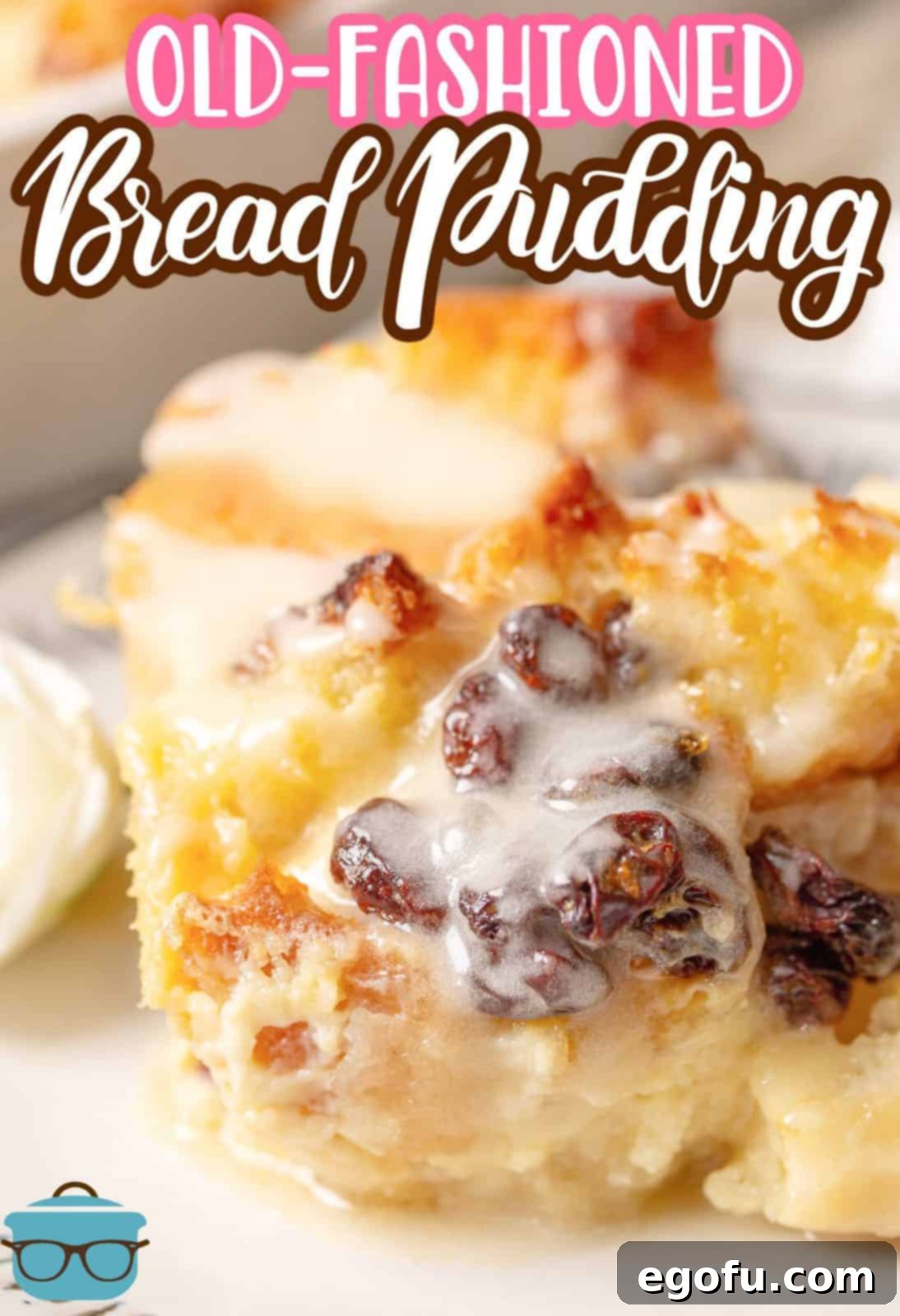
INGREDIENTS FOR THE BEST BREAD PUDDING
Crafting the perfect bread pudding begins with understanding the role of each ingredient. Here’s a detailed look at what you’ll need and why:
- Stale French Bread: The cornerstone of this recipe. Stale bread is essential because it acts like a sponge, readily soaking up the rich custard mixture without falling apart. A long loaf of French bread provides both flavor and the desired sturdy texture. While most robust breads work, avoid overly soft sandwich breads which can become soggy. Homemade bread without preservatives is also a great choice if you have it!
- Salted Butter: Real butter is non-negotiable for its rich flavor and crucial role in achieving the right texture. It’s used to brown the bread, adding a nutty depth, and forms the base of the luxurious glaze. Margarine, being primarily oil, lacks the structure and flavor profile needed for this recipe.
- Raisins: These chewy, sweet gems are a traditional addition, providing bursts of concentrated flavor and a delightful textural contrast. If you’re not a fan, feel free to swap them for dried cranberries, chopped apricots, or even miniature chocolate chips.
- Milk (2% or higher): The foundation of our creamy custard. The fat content in milk is vital for richness and helps the pudding set beautifully. Whole milk or even half-and-half will yield an incredibly decadent result.
- Large Eggs: Eggs are the binder that transforms the milk and sugar into a silky-smooth custard. For optimal incorporation and a smoother custard, allow your eggs to come to room temperature before whisking.
- Granulated Sugar: Provides the perfect level of sweetness, balancing the richness of the butter and milk. You can experiment with sugar substitutes if preferred, though the texture might vary slightly.
- Vanilla Extract: A non-negotiable flavor enhancer that brightens and rounds out all the other sweet notes. Use good quality pure vanilla for the best aroma and taste.
- Dark Rum or Whisky: An optional but highly recommended ingredient for adding a traditional, warm, and complex flavor profile. The alcohol bakes off, leaving behind only the delicious essence. If you prefer to skip alcohol, rum extract or an equal amount of milk can be used.
- Powdered Sugar: The magic ingredient for our simple yet irresistible glaze. It dissolves easily, creating a smooth, pourable topping that adds an extra layer of sweetness and shine.
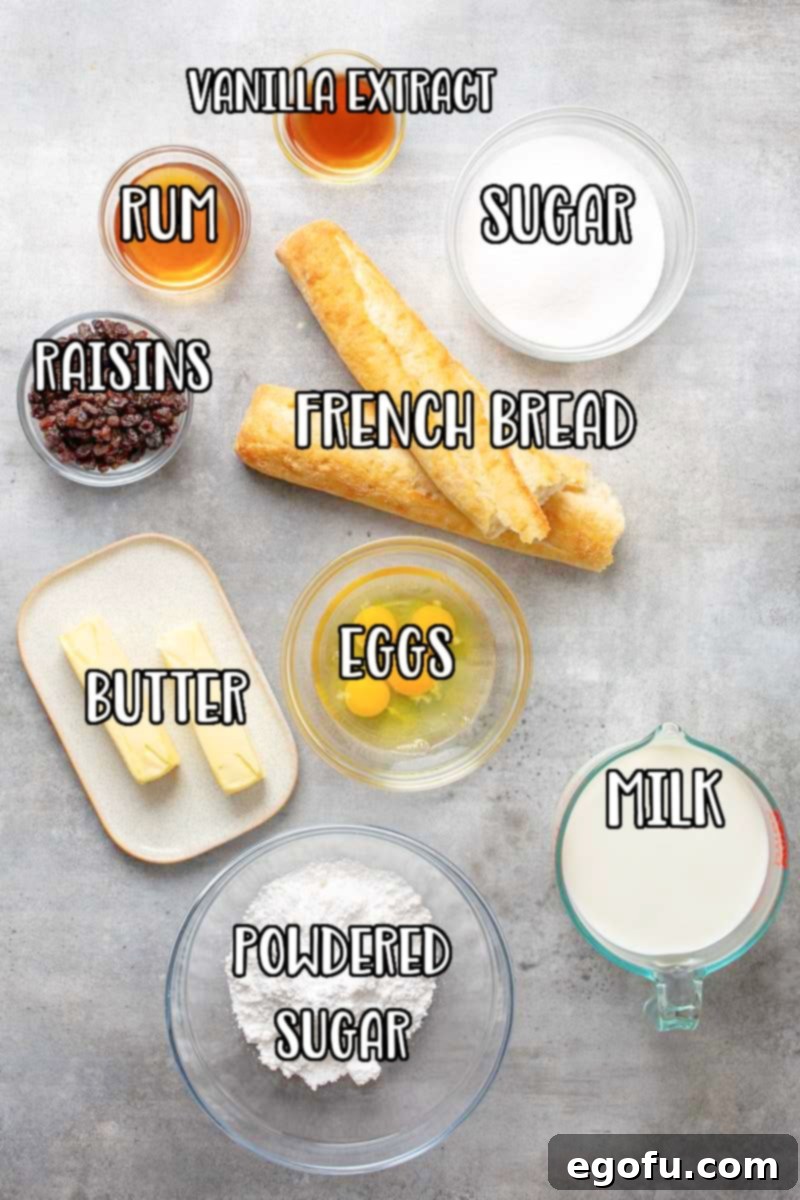
HOW TO MAKE THE BEST BREAD PUDDING: A DETAILED GUIDE
Making this classic bread pudding is a rewarding process that combines simple steps with incredible flavors. Follow these detailed instructions to create a truly unforgettable dessert.
Step 1: Prepare Your Baking Dish and Bread
Begin by preheating your oven to 350°F (175°C). While the oven heats, lightly spray a 2-quart casserole dish (or an 8×8 inch square baking dish) with nonstick cooking spray. This crucial step ensures your bread pudding releases easily after baking. Next, take your stale French loaf and either cut or rip it into bite-sized pieces, roughly 1-inch chunks. The rustic tearing method often creates more nooks and crannies for the custard to soak into, enhancing the texture.
Step 2: Brown the Bread to Perfection
In a large, heavy-bottomed skillet, melt 1/2 cup (1 stick) of salted butter over medium heat. Once the butter is fully melted and shimmering, add your bread chunks to the pan. Gently brown the bread, stirring continuously, until it achieves a beautiful golden-brown color and a slightly crusty exterior. This step is vital as it adds a wonderful nutty flavor and helps the bread maintain some structure even after absorbing the custard. The bread will eagerly soak up all the butter in the pan, creating a rich foundation for your pudding.

Step 3: Assemble the Base
Once the bread is perfectly browned and has absorbed all the butter, carefully transfer it into your prepared baking dish. Spread the bread pieces evenly across the bottom of the dish. Now, sprinkle 1 cup of raisins uniformly over the bread. This ensures that every spoonful of bread pudding will have a delightful sweet and chewy surprise.
Step 4: Whisk the Rich Custard
In a separate large mixing bowl, combine the liquid ingredients that will form your luscious custard. Whisk together 4 cups of milk, 4 large eggs (ideally at room temperature), 2 cups of granulated sugar, 2 tablespoons of vanilla extract, and 1/2 cup of dark rum or whisky (if using). Whisk thoroughly until all the ingredients are well combined and the sugar has dissolved. The mixture should be smooth and uniform, ready to transform your bread.

Step 5: Pour and Bake
Gently pour the whisked custard mixture over the bread and raisins in the casserole dish. Ensure that all the bread pieces are submerged and have a chance to soak up the liquid. You might want to press them down slightly with a spoon. Place the dish in your preheated oven and bake for approximately 1 hour. Begin checking for doneness around the 40-minute mark. Your bread pudding is perfectly baked when the liquid custard has set, the top is beautifully browned, and the edges of the pudding are pulling away slightly from the sides of the casserole dish. A knife inserted into the center should come out mostly clean.
Step 6: Prepare and Apply the Glaze
While your bread pudding is still warm from the oven, prepare the irresistible glaze. In a small bowl, whisk together the remaining 1/2 cup (1 stick) of salted butter, melted and cooled slightly, with 2 cups of powdered sugar. Continue whisking until you achieve a smooth, pourable consistency. Immediately pour this decadent glaze generously over the warm bread pudding. The warmth of the pudding will allow the glaze to melt slightly, seeping into the crevices and adding an extra layer of sweetness and moisture.
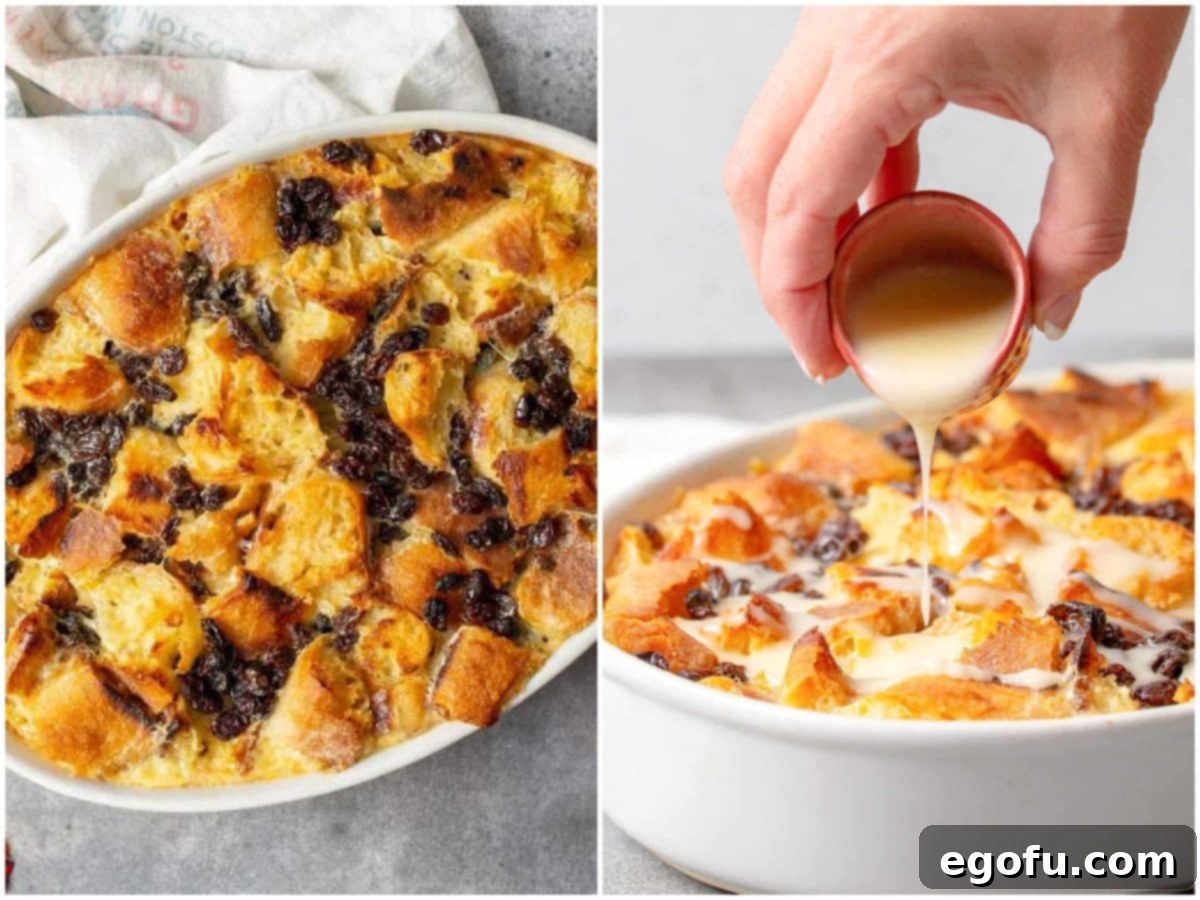
Then, the most important step: enjoy every single bite!
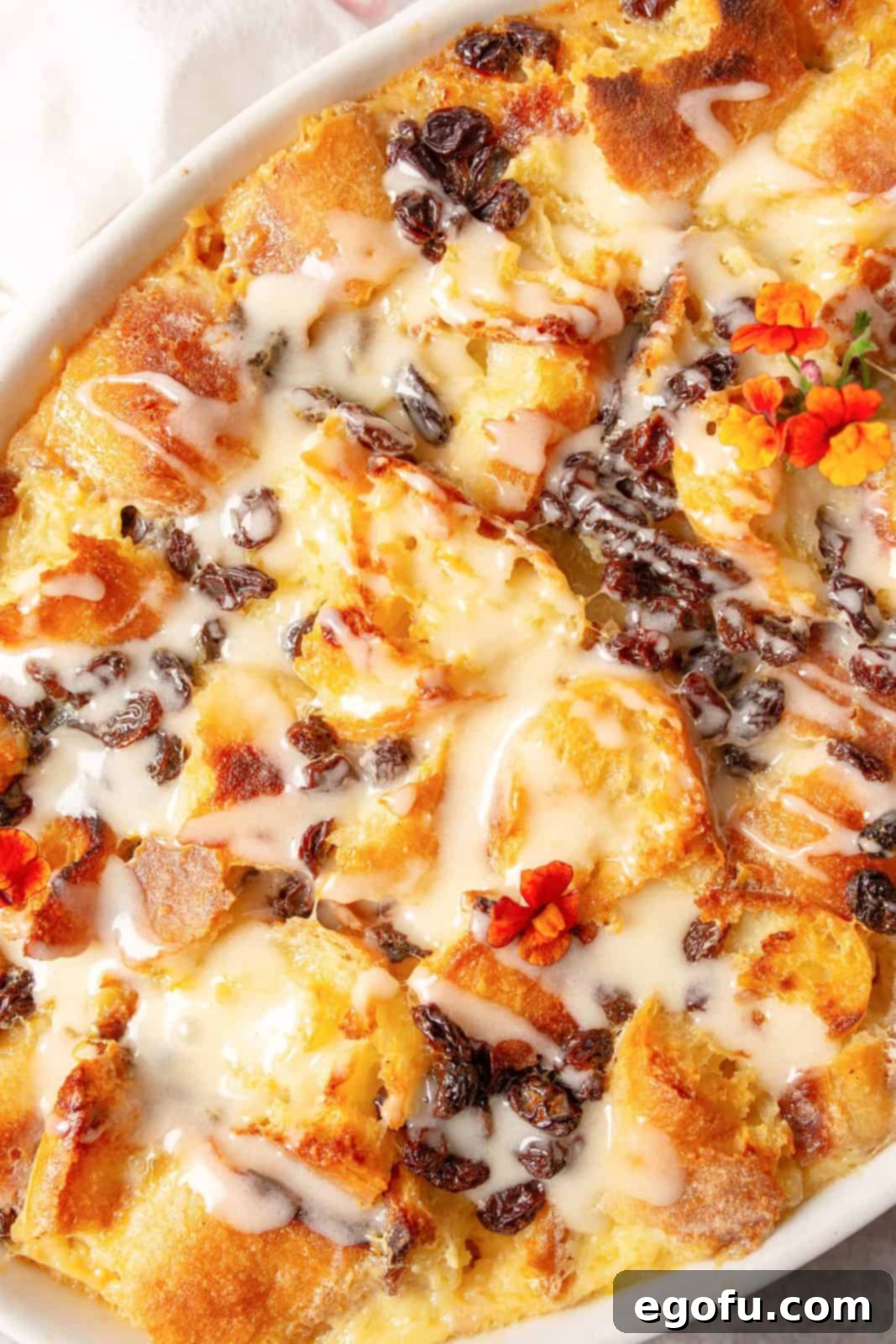
TIPS FOR BREAD PUDDING PERFECTION
Achieving a consistently perfect bread pudding is simple with a few key considerations:
- Embrace Stale Bread: Seriously, don’t use fresh bread! Stale bread is essential as it’s drier and thus a better absorber of the custard. If your bread isn’t quite stale, you can quickly dry it out by cutting it into cubes and baking it on a sheet pan at 300°F (150°C) for 10-15 minutes until lightly toasted but not browned.
- Don’t Rush the Soak: After pouring the custard over the bread, let it sit for at least 15-20 minutes at room temperature before baking. This allows the bread to fully absorb the liquid, ensuring a uniformly moist and tender pudding.
- Room Temperature Eggs: Eggs at room temperature emulsify more easily with the other ingredients, resulting in a smoother, more homogenous custard. If you forget to take them out, place them in a bowl of warm (not hot) water for 5-10 minutes.
- Prevent Overbaking: An overbaked bread pudding can be dry and rubbery. Start checking at the 40-minute mark. The pudding is done when the center is set, but still slightly jiggly, and a knife inserted comes out clean. The top should be golden brown.
- Customize Your Add-ins: While raisins are classic, feel free to experiment! Dried cranberries, chopped apricots, pecans, walnuts, chocolate chips, or even citrus zest can add wonderful dimensions of flavor.
- Serving Temperature: Bread pudding is incredibly versatile. It’s often best served warm, allowing the flavors to meld and the texture to remain soft. However, it’s also delicious at room temperature and can even be enjoyed cold, straight from the refrigerator.
DELICIOUS VARIATIONS TO EXPLORE
Once you’ve mastered the classic recipe, the world of bread pudding variations opens up! Here are a few ideas to spark your culinary creativity:
- Chocolate Chip Bread Pudding: Stir in 1-2 cups of chocolate chips (milk, dark, or white) with the raisins for a decadent treat that appeals to all ages.
- Apple Cinnamon Bread Pudding: Add 1-2 peeled, cored, and diced apples along with a teaspoon of ground cinnamon to the custard for a comforting, autumnal twist.
- Nutty Bread Pudding: Fold in 1/2 cup of toasted pecans or walnuts for added crunch and earthy flavor.
- Berry Bread Pudding: Incorporate fresh or frozen mixed berries (raspberries, blueberries, blackberries) for a burst of fruity freshness. Reduce sugar slightly if berries are very sweet.
- Coconut Rum Bread Pudding: Substitute some of the milk with coconut milk and add a touch of shredded coconut for a tropical flair.
SERVING SUGGESTIONS FOR AN UNFORGETTABLE TREAT
Elevate your bread pudding experience with these delightful serving ideas:
- A Scoop of Ice Cream: Classic pairing! A scoop of vanilla bean ice cream melting over warm bread pudding is pure bliss.
- Dollop of Whipped Cream: Lightly sweetened homemade whipped cream provides a lovely contrast to the rich pudding.
- Fresh Berries: A scattering of fresh raspberries, strawberries, or blueberries adds freshness and a touch of color.
- Extra Sauce: Serve with an extra pitcher of the warm glaze, or consider a caramel sauce, bourbon sauce, or a simple créme anglaise.
- Breakfast Pairing: For breakfast or brunch, serve smaller portions alongside coffee or tea, perhaps with some fresh fruit on the side.
MORE SWEET TREATS TO EXPLORE
- Homemade Banana Pudding
- Chocolate Covered Strawberry Bread Pudding
- Air Fryer Bread Pudding
- Pineapple Bread Pudding
- Crock Pot Bread Pudding
- Banana Bread Pudding
Originally published: December 2021
Updated photos & republished: March 2025
The Best Bread Pudding
This old-fashioned recipe for The Best Bread Pudding is easily made with chunks of French bread coated in a deliciously spiced custard! Perfect for a dessert, breakfast or brunch!
Ingredients
- 1 long loaf of French Bread
- ½ cup (1 stick) salted butter
- 1 cup raisins
- 4 cups milk (2% or higher recommended)
- 4 large eggs
- 2 cups granulated sugar
- 2 Tablespoons vanilla extract
- ½ cup dark rum or whisky (optional, see notes for substitutes)
Glaze:
- ½ cup (1 stick) salted butter, melted and cooled
- 2 cups powdered sugar
Instructions
- Preheat the oven to 350°F (175°C). Spray a 2-quart casserole dish (or an 8×8 square baking dish) with nonstick cooking spray.
- Cut or rip the long loaf of French Bread into bite-sized pieces.
- In a large skillet over medium heat, melt ½ cup (1 stick) salted butter. Add the bread and gently brown it until golden and crusty, stirring continuously. The bread will absorb all the butter.
- When all the butter is absorbed, pour the bread into the prepared casserole dish. Sprinkle 1 cup of raisins evenly over the bread.
- In a large bowl, whisk together 4 cups milk, 4 large eggs, 2 cups granulated sugar, 2 Tablespoons vanilla extract, and ½ cup dark rum or whisky (if using).
- Pour the custard mixture over the bread and raisins in the casserole dish.
- Bake for 1 hour, checking at the 40-minute mark. The casserole is done when the liquid is set, the top has browned, and it’s pulling away from the sides of the dish.
- To make the glaze, combine ½ cup (1 stick) salted butter, melted and cooled, with 2 cups powdered sugar using a whisk. Pour the glaze over the warm bread pudding.
- Serve warm (it can also be served at room temperature).
Video
Notes
- The glaze can be poured over the whole dish or over each individual slice.
- You can leave out the alcohol and replace with 1 Tablespoon vanilla extract and 1 Tablespoon rum extract. Alternatively, substitute the alcohol with an additional ½ cup of milk.
- Various sturdy breads can be used for this such as French (like we used), Italian, challah, or Texas toast. Avoid soft sandwich breads or brioche.
- This can be frozen; see the “How do I store leftovers?” FAQ section above for detailed freezing and reheating tips.
Nutrition
Calories: 564kcal | Carbohydrates: 86g | Protein: 9g | Fat: 19g | Sodium: 368mg | Fiber: 2g | Sugar: 58g
Nutritional Disclaimer
“The Country Cook” is not a dietician or nutritionist, and any nutritional information shared is an estimate. If calorie count and other nutritional values are important to you, we recommend running the ingredients through whichever online nutritional calculator you prefer. Calories and other nutritional values can vary quite a bit depending on which brands were used.
Did you make this recipe?
Share it on Instagram @thecountrycook and mention us #thecountrycook! We love seeing your delicious creations!
CONCLUSION: A TIMELESS COMFORT IN EVERY BITE
This classic bread pudding recipe is more than just a dessert; it’s a celebration of comfort, resourcefulness, and delicious simplicity. With its perfectly browned French bread soaked in a rich, velvety custard and topped with a luscious glaze, it promises a heartwarming experience that transcends generations. Whether you’re serving it for a special occasion or simply as a cozy treat, this bread pudding is guaranteed to become a cherished favorite in your culinary repertoire. Don’t let stale bread go to waste when it can be transformed into such an extraordinary delight. We encourage you to try this recipe, gather your loved ones, and savor every single, comforting bite. Happy baking!
